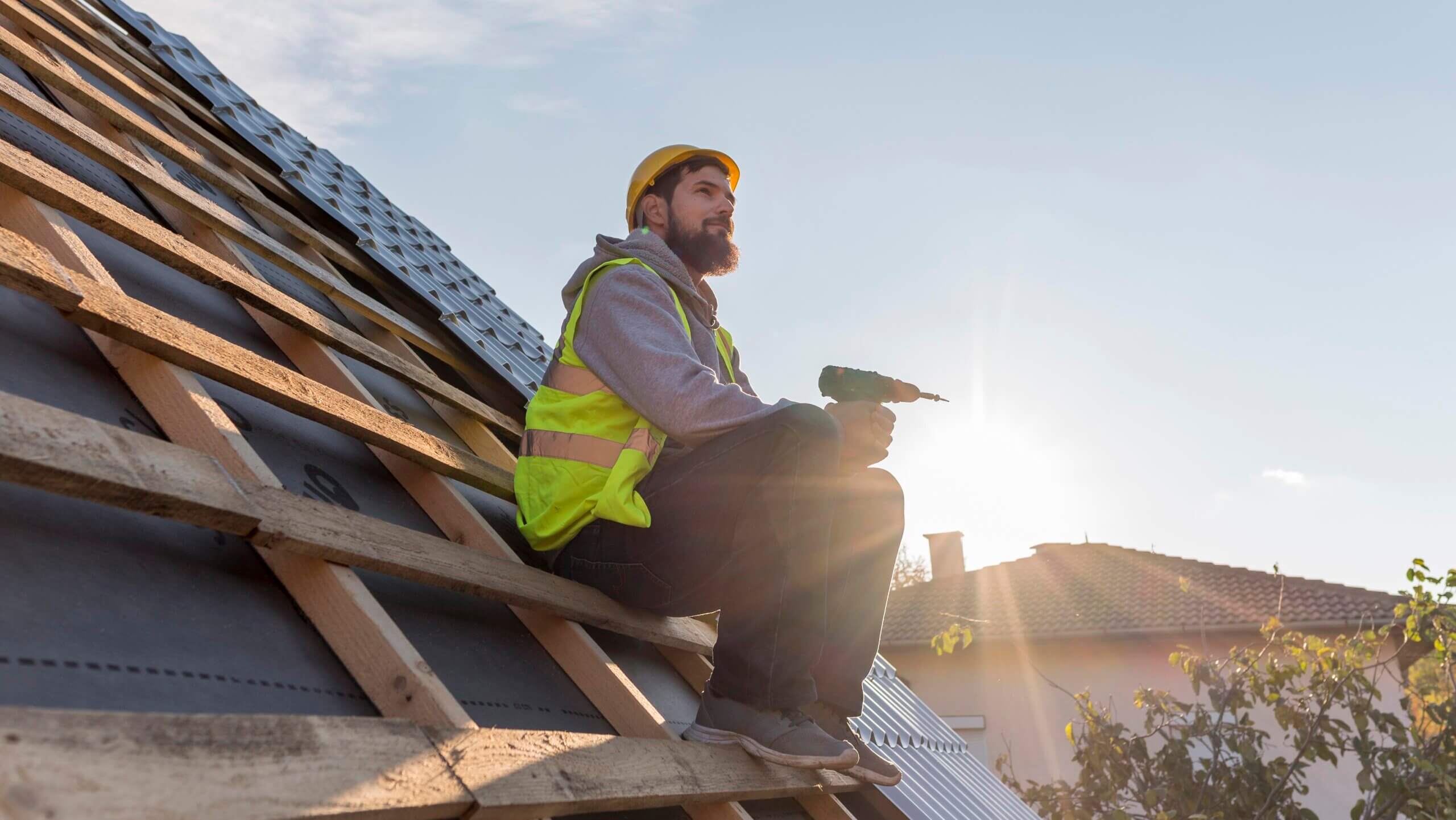Introduction
Are you looking up at your roof and wondering whether it’s time for a replacement? Your roof plays a crucial role in protecting your home from the elements, and knowing when to replace it can save you from potential problems down the road. In this guide, we’ll walk you through the key factors to consider when determining if you need a new roof.

Table of Contents
- Signs of Roof Damage
- Roof Age and Lifespan
- Interior Leaks and Water Stains
- Shingle Condition and Curling
- Moss, Algae, and Mold Growth
- Sunlight Penetration
- Sagging Roof Deck
- Energy Efficiency
- Roof Valleys and Flashing Issues
- Increasing Energy Bills
- Missing or Damaged Shingles
- Granule Loss
- Roof Inspection by a Professional
- Considerations Before Replacing Your Roof
- Conclusion: Invest in the Protection of Your Home
Click here and get a free quote for your roofing project with PLJ Carpentry
Signs of Roof Damage
Your journey in determining whether you need a new roof begins with a thorough inspection of your existing one. Keep an eye out for missing, cracked, or damaged shingles, as well as any visible signs of wear and tear.
Roof Age and Lifespan
The age of your roof is a significant factor in deciding whether it’s time for a replacement. Most roofs have a lifespan of around 20 to 25 years. If your roof is approaching or has exceeded this timeframe, it might be the right time to consider a new one.
Interior Leaks and Water Stains
Water stains on your ceiling or walls, or worse, active leaks, can be clear indicators of roof problems. If you’re noticing water intrusion inside your home, it’s essential to investigate further and address the issue promptly.
Shingle Condition and Curling
Inspect the condition of your shingles. Are they curling, buckling, or showing signs of significant granule loss? Damaged shingles can compromise the integrity of your roof and lead to leaks.
Moss, Algae, and Mold Growth
The presence of moss, algae, or mold on your roof not only affects its appearance but can also cause moisture retention, leading to shingle deterioration. Regular cleaning might help, but extensive growth could signify the need for a new roof.
Sunlight Penetration
If you notice sunlight shining through your roof boards into your attic, it’s a clear sign of gaps or holes in your roof. These openings can allow water and pests to enter, making a case for a new roof installation.
Sagging Roof Deck
A sagging roof deck indicates structural issues and could be a sign of extensive water damage. To ensure the safety of your home, consult a professional if you observe any sagging.
Energy Efficiency
An old, inefficient roof can lead to increased energy bills. If your heating and cooling costs have spiked, your roof might not be providing the insulation it once did.
Roof Valleys and Flashing Issues
Roof valleys and flashing are vulnerable points prone to leaks. If these areas are compromised, water can seep in and cause damage. Regular inspections can help detect such issues.
Increasing Energy Bills
Unexplained spikes in your energy bills could be attributed to a roof that’s no longer effectively insulating your home. Consider a new roof to improve energy efficiency.
Missing or Damaged Shingles
Missing or damaged shingles expose your roof to the elements, making it susceptible to leaks and further damage. Address these issues promptly to avoid larger problems.
Granule Loss
Check your gutters for granules from your shingles. Excessive granule loss could indicate shingle deterioration and a need for replacement.
Roof Inspection by a Professional
Bringing in a professional roofing contractor for an inspection can provide you with a comprehensive assessment of your roof’s condition. They can help you make an informed decision.
Considerations Before Replacing Your Roof
Before deciding on a new roof, consider factors such as the type of roofing material, your budget, and the climate in your area. Different materials have varying lifespans and costs.
Conclusion: Invest in the Protection of Your Home
Your roof is your home’s first line of defense against the elements. Knowing when to replace it can prevent costly repairs down the line. Regular inspections and addressing issues promptly are key to maintaining a durable and secure roof.
FAQs
- Q: How often should I inspect my roof? A: It’s recommended to inspect your roof at least twice a year, ideally in the spring and fall.
- Q: Can I lay new shingles over my existing ones? A: While it’s possible, it’s generally recommended to remove the old shingles before installing new ones for a longer-lasting result.
- Q: What are some eco-friendly roofing options? A: Options like metal roofing and solar shingles offer eco-friendly alternatives with energy-saving benefits.
- Q: How do I know if a leak is from my roof or something else? A: A professional inspection can help determine the source of the leak and its origin.
- Q: What’s the average cost of a roof replacement? A: The cost varies depending on factors such as the size of your roof, the chosen material, and your location. It’s best to get quotes from reputable contractors.

